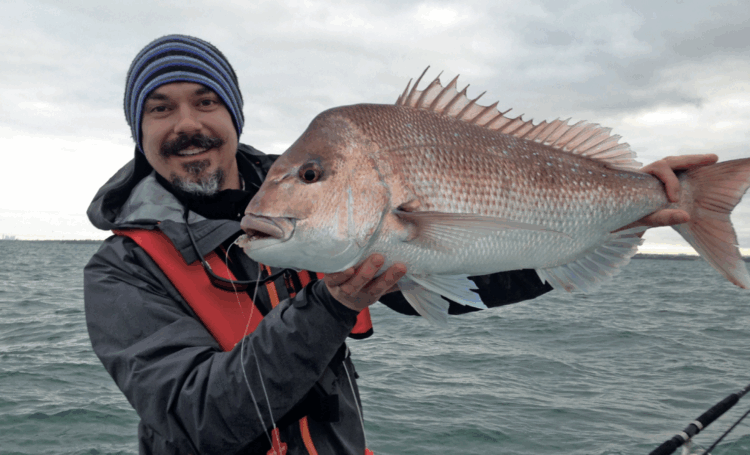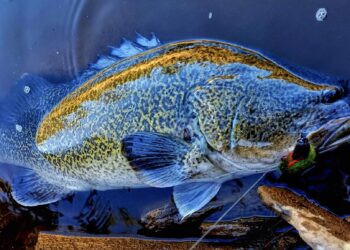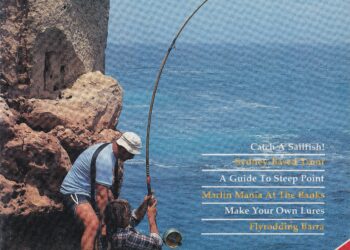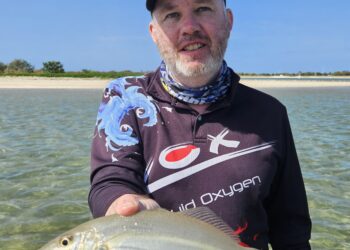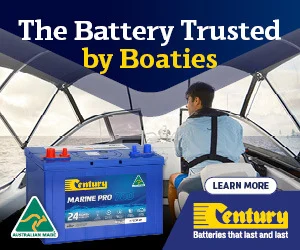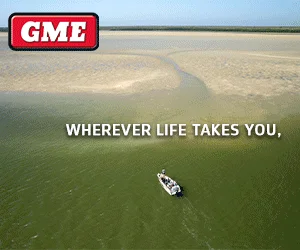ROUNDING the breakwater at dawn we were greeted a slight breeze. I opened up the Yamaha and we powered off towards the still sea. This is the best moment of the day. The uncertainty of what lays ahead gets the adrenaline flowing and when it’s snapper season in Melbourne, it’s a feeling shared by many thousands of Victoria anglers as they go in search of these wonderful fish.
We followed the GPS and within 10 minutes were intently looking at the sounder for the gentle rise in the bottom that signified we were at the hump. The hump is a small hill of about 1.5 metres in an otherwise featureless part of the bay. With the tide running in we positioned ourselves up tide of the hump and let the anchor rope out so we were positioned about 20 metres away. This would allow for our cast baits to finish at the edge of it.
Once anchored I loaded the berley pot with bread, pilchards and tuna oil. It was crunched up and sent to the bottom, before lifting it up a couple of metres. Being a couple of metres above the bottom allows the up and down movement of the boat to disperse the scent and small morsels over a greater area. I then started cubing up some old pilchards and salmon, which had defrosted overnight, and each cube was dispatched every 30 seconds for 15 minutes.
Rods were loaded up with silver whiting, squid heads, salmon fillets, garfish and pilchard and cast in all directions around the back of the boat. There was a solitary rod with a snapper snatcher placed at the back of the berley pot with a couple of salmon fillets. It is amazing how often this rod goes off. Drags were checked to ensure that there was about 1 kg of drag pressure. This is enough to set the hook when a snapper takes the bait and it is rare that I strike a snapper, letting the pressure as the fish takes off with the bait set the hooks. Having the hook points fully exposed is the key.
Boats were now moving all over the bay, with groups starting to form where fish had been caught in recent days. The outer artificial, inner Mordialloc, rickets point, but we were all alone apart from a boat about 300 metres away. Just the way I like it, as I looked to the horizon to see the first light of the day appearing.
The sun rose and we had no further action, and judging by the boats moving around, others were seeing similar results. There was no need to move though, as we had a good berley trail and with a tide change at 7 am I had complete confidence we would get another fish or two.
Out of the corner of my eye I noticed an enquiry on the far left rod. Not a screaming rod buckle that rips the rod tip to the water. The more common one where the rod dips down and slowly comes back up, only to go down again and up again, then loads up as the fish inhales the bait. Once, twice but not the full take. I wound the bait in five minutes later to see the tell-tale signs of a crushed bait, signalling that there was at least one good red in the area. This filled me with confidence. Where there’s one there are usually more, sometimes lots more. I had confidence the berley would do the trick and as the red of the morning sun was beginning to fill the sky another rod had an enquiry. This rod just slowly buckled over and line started peeling from the reel. After a short run I could feel the familiar headshakes of a snapper and enjoyed the short fight that ensued before seeing the beautiful colours of a new season red below the surface. One on board and it was not even 6 am.
The sun rose and we had no further action, and judging by the boats moving around, others were seeing similar results. There was no need to move though, as we had a good berley trail and with a tide change at 7 am I had complete confidence we would get another fish or two. Just after the tide had turned a rod screamed off and this was a good fish, taking a long run, before slugging it out deep and resisting all the way to the boat. Jack got the fish into the net and as he was unhooking his fish, my rod had some slow nods before, the fish took off at a slow pace. A few small runs and I had it onboard. It was only a small fish at 2 kg, but just the right size for that night’s meal. The next hour saw us get two fish about 15 minutes apart and then we decided to call it a morning and head home at about 8 am.

When we got back to the ramp, there were some who had come back in but not many. It was the usual suspects, those that know their fishing and focus on doing the things that count.
If you want to get your first snapper this snapper season or maybe improve your catch rates, then hopefully the below tips will help you achieve this.
To successfully target snapper, you need to get the small things right, but if you do your chances will increase as they really are creatures of habit. Victorian Fisheries has done research using acoustic sounding and have found that snapper fish do similar things each year and the below traits will help you to catch them:
- They enter and leave the bay following similar patterns each year.
- They regularly used artificial reefs and repeatedly moved to and from specific locations.
- Most fish leave in December- January. With a second group leaving April-May.
- The peak detection of fish is when the water temperature is 16-18 degrees.
- The fish tend to leave Carrum bight and head south when the water temperature hits 19 degrees.
- During October and November, the fish tend to move around a lot.
- They rarely spend any more than a day in any one spot and often it is only a few hours.
- They move up to 10kms in a day with some fish having moved 40-50 km in a day.
I recommend having a read of the full research and it can be found at the following website: vfa. vic.gov.au/science-in-fisheries/fisheries-research- findings/science-supporting-key-species/ tracking-snapper-in-port-phillip-bay
So how do you incorporate the above into your snapper plans?
The first thing to do is to look at where you are going to fish. There are several things that will influence this including time of day, prior weather patterns, time of year and water temperature to name a few.
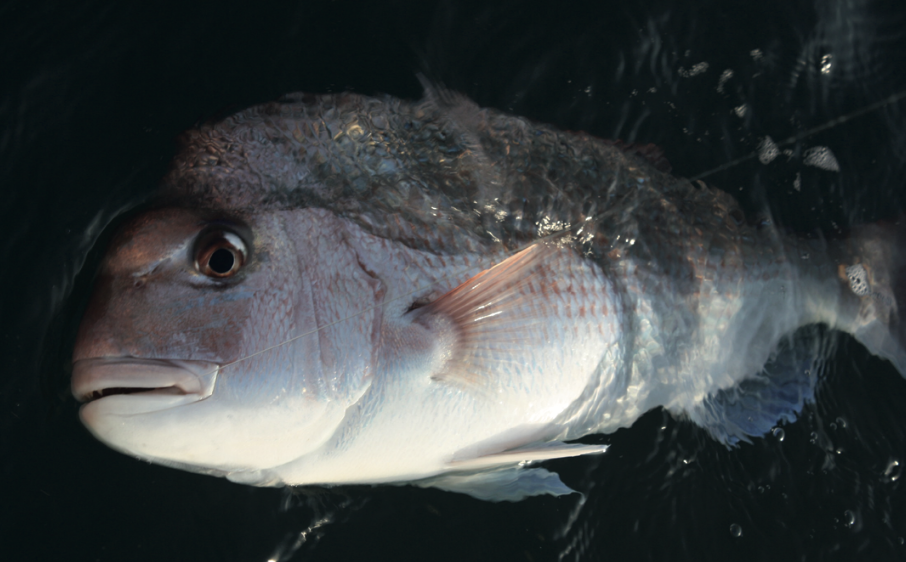
Time of the year is a key one with the snapper bite staring at the top of PPB as the water warms up here first and then it appears they move down alongside the eastern side of the bay as the water keeps warming up. My choice of fishing areas for someone starting out would be from Black rock down to Mornington. I would start around Mordialloc to Black rock late October through to Mid-November as the water temperature is likely to be warmer and then head further south as you move into December and the water temperature rises. This utilises the ideal temperatures for the fish.
Time of day will also have an influence and I would start in 13 to 14 metres depth early in the morning and then head out as the sun gets higher. The exceptions to this are if you have marks that you know yourself, then you may fish shallower or deeper. The reason for this is that fish move in during darkness to feeding shallower water before heading back out during the day. If it has been very rough in the proceeding day it can be worth fishing in 8-10 metres in close especially in reefy parts of the bay.
It is also useful to look at reports on social media to get a guide as to where the fish may be. Useful information to be gained is rough location, water depth, water temperature. Not to go to the spot but to put you in the general area, as the fish will likely be moving in that area.
Putting this all together if I was a beginner going for a fish in late October I would head to Facebook and may see that the fish were biting in 13 metres, caught at Mordialloc (big area) in a temp of 16 degrees. I would go out first thing in the morning to the 13-metre line off Mordialloc and see what the water temperature is. If it all lined up, I would sound around the area till I found fish or good bottom to fish on such as a reef or rubble bottom. I would stay away from the other boats, as this is where the fish were probably yesterday. I also believe you have more chance of catching snapper being by yourself than being near other boats.
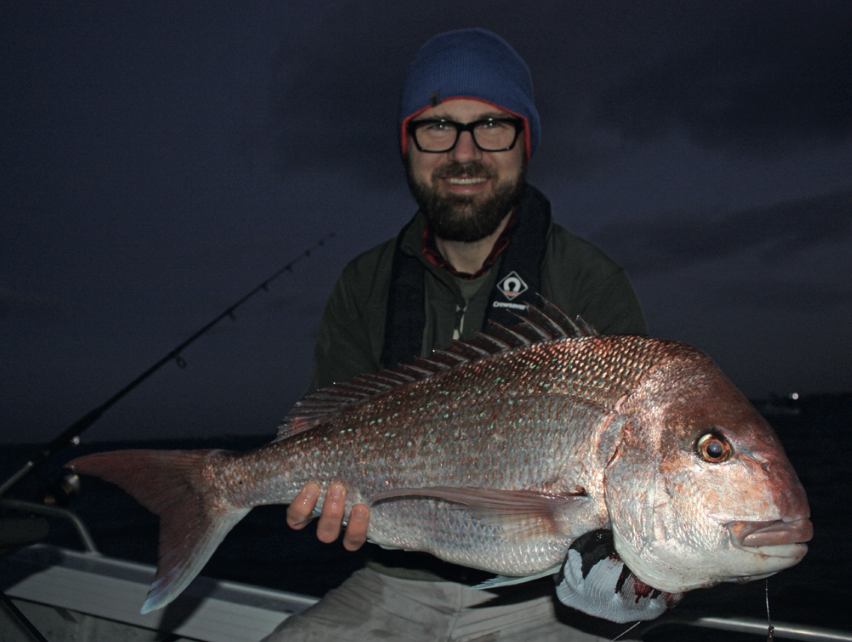
The other way to do it is to look for GPS marks in the area where fish are. This will give you an indication of where you may find fish and I would use this as a guide only, as public GPS spots will usually be fished by a lot of people. They are a place to go to and then start sounding around to find your own patch of fish.
Once you have decided on your spot it is time to get your gear ready. I have used the same snapper gear for the last 35 years and it consists of the original ugly sticks (6-8kg) of about 7ft with some Penn reels. I use 20 lb line with a swivel to a 40lb black magic Fluro carbon leader. To this I use a double hook snelled rig with 5/0 Gamakatsu octopus Hooks. Simple gear but highly effective. I have included the brand names to show the quality of the gear I use. You may only get one or two shots at a fish in a session and you want to make sure that you have the best chance of landing one and quality gear will always make a difference and is worth paying the extra money for. For those looking to buy a new outfit I suggest heading to your local tackle store where they will be able to provide you with some good options for all budgets. You don’t need top end gear, but you do need good quality and I would spend more on the reel than the rod, as a good drag is key.
The reason I don’t use a sinker is that I like the bait to be floating down through the water column and with little flow in the bay I don’t tend to have any issues with the baits moving around.
With the tackle taken care of, I get to the other items that are just as important to prepare, bait and berley. With bait I always prefer fresh if I can get it, but that is not always possible, so I find frozen bait is okay but make sure it is of a good quality. I always find it is good to have a variety of baits available with my preferences for fresh being garfish, salmon, calamari, barracouta, snook or frozen silver whiting, pilchard and squid. Make sure with frozen bait you take it out the night before to defrost, so it is ready to go in the morning. With fresh bait make sure you look after it and if caught the day before, making sure it is kept cool. If caught the same day, you cannot get better.
To rig baits up using fish I tend to have a hook either side of the head as snapper will often hit the head of the bait and this maximises the chances of hooking up. Fish fillets I will put a hook at the top and bottom of the fillet. With calamari heads a single hook 6/0. Calamari whole hook at the tip and one in the head.
Berley is a key in helping to bring fish to the area, so I make sure they can smell it from a long way away. To do this I use the berley pot and the mixture is bread, tuna oil and pilchards. I mix this the night before and put it in the pot as soon as I get to the spot. I will also pull it up every 15 minutes and mash it up to get the juices flowing again. To supplement this, I also cube up into small pieces old pilchard and fish to feed a trail down. The key here is to bring the fish to you, not to over feed them.
You also want to make sure your boat is set up well with rod holders that will have your rods sitting horizontal to the water. This way when they have the slow nod type bites they will not feel as much resistance and are more likely to take the bait. The other key is to have the rod holders, so they allow the rods to be cast to different spots around the boat.
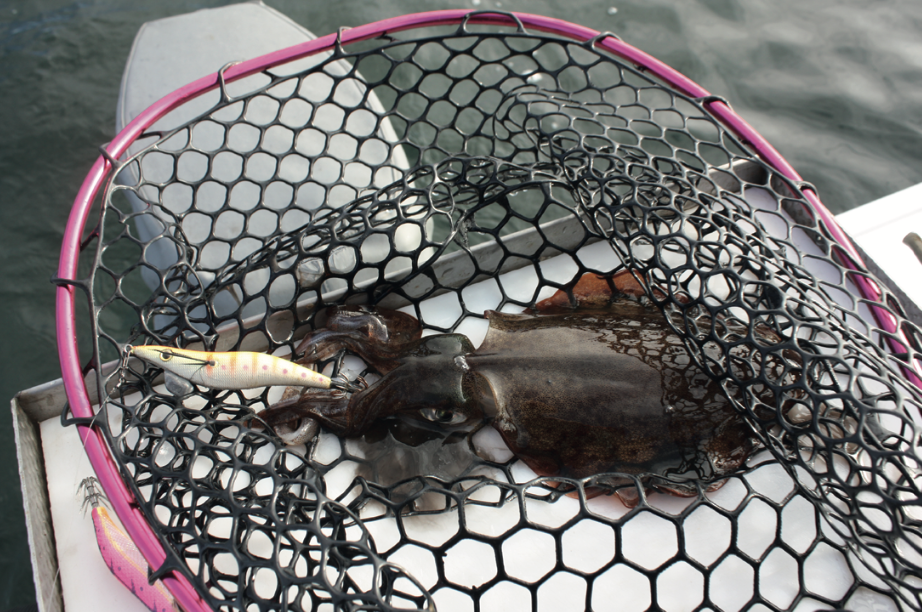
Having a good sounder and GPS is also critical. I have a touch screen sounder that allows me to place the cursor on a fish, which then records the GPS mark and I can go back over it to confirm that it is a fish and can use it to anchor on the fish. The sounder is invaluable when it is a quiet day and you need to go in search of fish. Learn how to use it and it can mean the difference between catching them some days and not. I will give it half an hour in a spot if I have found them on the sounder and I will then move. Quite often you will catch a fish within 10 minutes of sounding them up.
The other things to keep in mind is weather. This plays a crucial role in snapper fishing not just from when it is safe to go, but on when the fish will bite. The best conditions I have found for snapper are a strong southerly blow, however, this is not always enjoyable when fishing on the bay.
Time and tide are the last considerations. While snapper can be caught at all times of the day and I have caught them day and night. My preference is for dawn particularly at the start of the season.
From a tide perspective I like an incoming tide, as it usually is in the same direction as the wind allowing the lines to sit straight out the back. Tide changes are also peak times for snapper bites, as is dusk.





